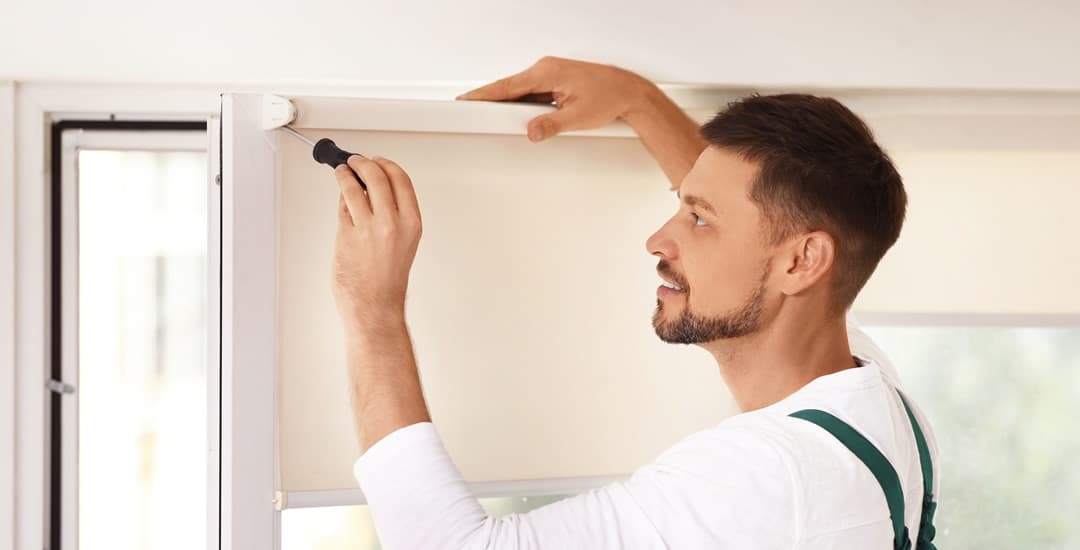
Which blinds are easiest to maintain? Overall, probably PVC or vinyl roller blinds. When I talk about maintaining blinds, I’m taking into account a few things; how easy they are to clean, how much can potentially go wrong with them, and how easy it is to keep them in good working order and what this involves.
Some blinds are definitely more likely to be the squeaky wheel (usually of the operating mechanism…) in maintenance terms than others; so in this blog post I’ll look at which blinds are easiest to maintain, and outline the basics of what’s required or possible in terms of maintaining, cleaning, and caring for the main types of blinds sold here in the UK.
How to maintain window blinds
What does maintaining a window blind actually involve anyway? For the most part, all that is required is to keep them reasonably clean in order to stop gunk and/or dust gumming up the operating mechanism and becoming ingrained in fabrics; and this tends to mean nothing more than the occasional dusting for most blinds, and wiping off blinds in kitchens and bathrooms before they get scuzzy.
It is also good practice to operate your blinds regularly; if you open and close them more or less every day that’s already covered, but if not, opening and closing them a couple of times a week to prevent the mechanism from stiffening is fine too.
Over the lifetime of a well-made set of blinds (which is commonly north of a decade), you may occasionally need to perform some other basic maintenance at some point.
This may mean using a little WD40 on the operating mechanism if it starts to get stiff or squeaky, potentially sorting out fabric jams in roller blinds, and possibly needing to reattach breakaways in control cords on blinds of all types.
This broadly outlines the basics of how to maintain window blinds regardless of their type.
From there, I’ve established which blinds are easiest to maintain from easiest to hardest by scoring them on how likely they are to need some sort of simple fix, how onerous they are to keep clean on an ongoing basis, and how much hassle any theoretical fix or preventative maintenance for them is likely to be.
Which blinds are easiest to maintain?
Overall, the easiest blinds to maintain are waterproof roller blinds
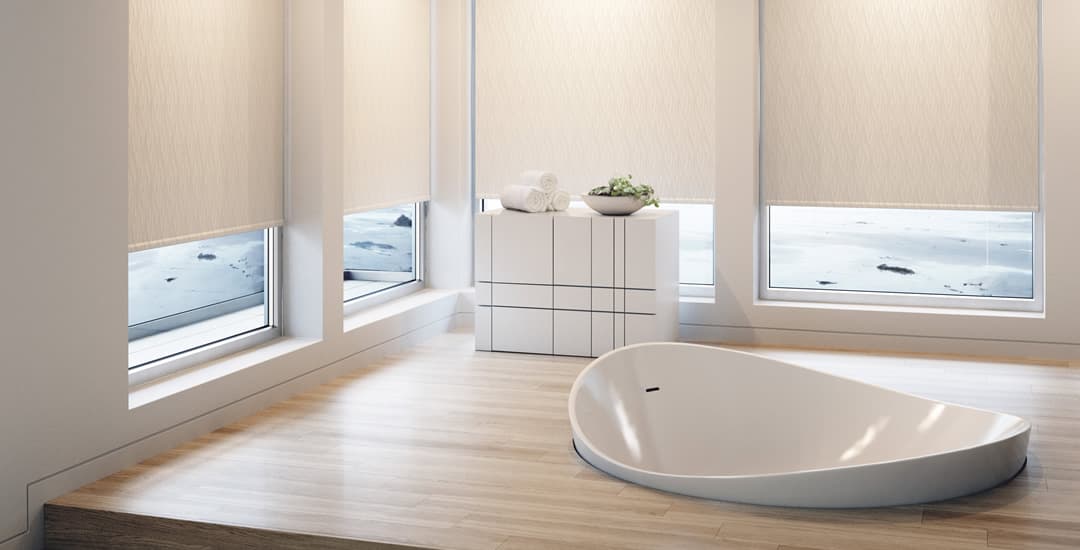
Waterproof roller blinds (which are the type made of either PVC or vinyl rather than polyester) are the easiest type of blinds to maintain.
- Waterproof roller blinds are really quick to clean (they’re made of one continuous sheet of fabric that you can either dust, or as it is waterproof, wipe off with a wet cloth).
- They have a really simple operating mechanism, which means that there’s very little that can actually go wrong with them in the first place.
- If roller blinds do need any fixes performed, these tend to be limited to simple things like reattaching a control cord that’s parted at the safety breakaway under pressure, realigning wonky fabric or correcting a fabric jam, or needing to lubricate the control mechanism if it gets stiff or squeaky.
Second place: Regular roller blinds
Regular (as in non-waterproof, usually polyester) roller blinds are the second easiest type of blinds to maintain. They share all of the same traits as waterproof roller blinds as per the above, aside from the fact that they’re not waterproof!
This means that you can’t really get them wet, so the “wiping off with a wet cloth” option is off the table. However, as you would not use a non-waterproof roller blind in a wet or humid environment, all they’re ever likely to face in terms of cleaning challenges is dust anyway, so that point is more or less moot.
Joint third place: Roman blinds and day and night blinds respectively
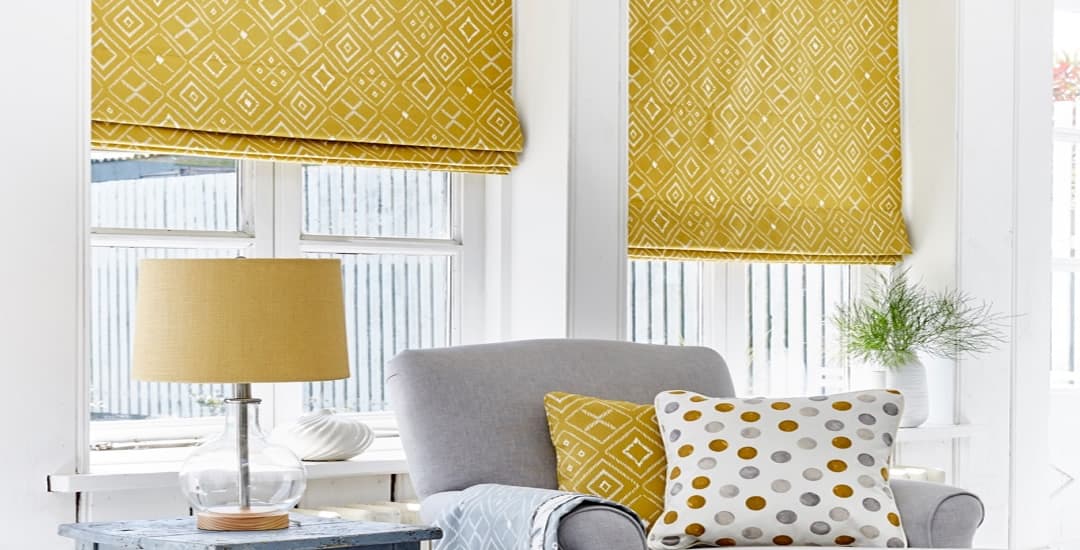
Both Roman blinds and day and night blinds are similar-ish to roller blinds in terms of operation, albeit with a little more complexity for each.
For day and night blinds, this is because the fabric goes up both the front and back of the blind in one continuous loop, rather than rolling one way around a tube. For Roman blinds, this is because their fabric folds up into pleats rather than rolling; and also because Roman blinds are made of high-end and potentially, intricate and delicate fabrics.
- Neither Roman blinds nor day and night blinds are waterproof; but this also means that they’re not used in humid or wet rooms, where the moisture in the air encourages dust to stick. This means that their cleaning involves nothing more than occasional dusting.
- For Roman blinds, the fact that their fabric concertinas up into pleats rather than rolling around a tube means there’s a bit more going on there, but in normal usage conditions, nothing really to go wrong. Roman blinds are also less likely to end up with the fabric on a wonk or jamming up, as they don’t roll up and so, can’t really stagger off to the side like Great Uncle Joe after an hour with the Christmas cooking sherry.
- The only real type of maintenance fixes Roman or day and night blinds might need involve lubricating stiff operating mechanisms with a spray of WD40.
Fourth: Faux-wood blinds
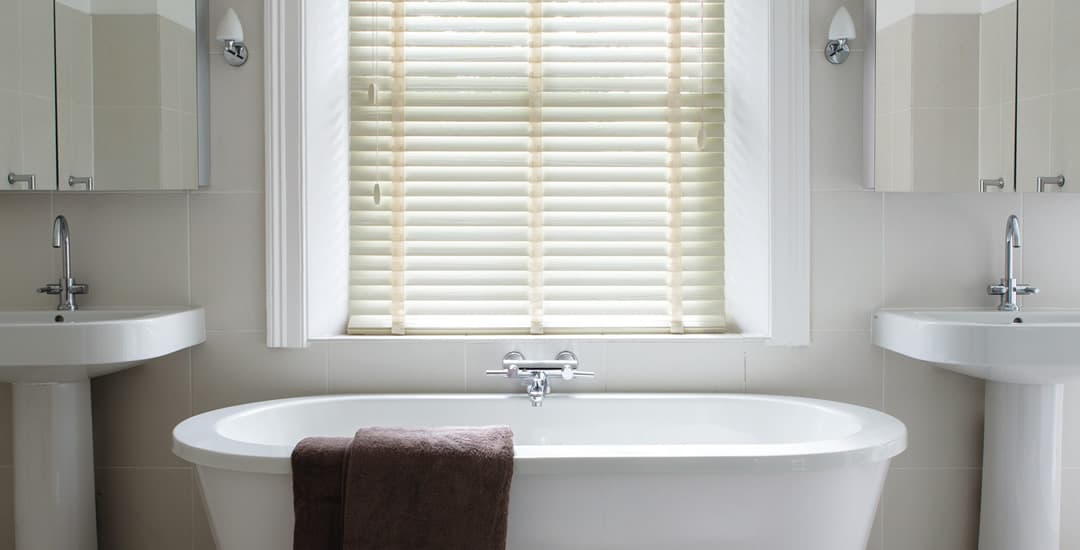
Faux-wood blinds are made of sturdy, waterproof PVC, but look very much like real wood. They’re popular as they can be used in wet/humid rooms where real wooden blinds fear to tread, and because they’re cheaper than real wooden blinds too.
Faux-wood blinds are a type of Venetian blind, which essentially means that they’re made up of rows of horizontal slats, held together by control cords and that can be tilted as well as opened and closed.
It is this latter point, the nature of Venetian blinds, that means they’re “top of the bottom half” of which blinds are easiest to maintain. Why?
- First up, cleaning. Faux-wood blinds are waterproof and so can be wiped off as well as dusted off. However, Venetian blinds of all types take longer to clean than any of the other blinds mentioned so far, because all of those individual slats you have to get to.
- In terms of what is potentially likely to go wrong with faux-wood blinds, the answer is “very little;” in my opinion, they’re the most robust and hard-to-break type of blinds of all. However, the control mechanism for Venetian blinds are a bit more convoluted than for the other entries so far, as they incorporate tilting capabilities and lift cords or tapes too as well as the raising and lowering mechanism.
- Maintenance wise, once more the mechanism of a faux-wood blind may need oiling now and then, and occasionally you might get an issue with a lift cord or lift tape; and as ever, the potential for the child safety breakaway in the control cord may need refixing at some point too.
Fifth: (aluminium) Venetian blinds
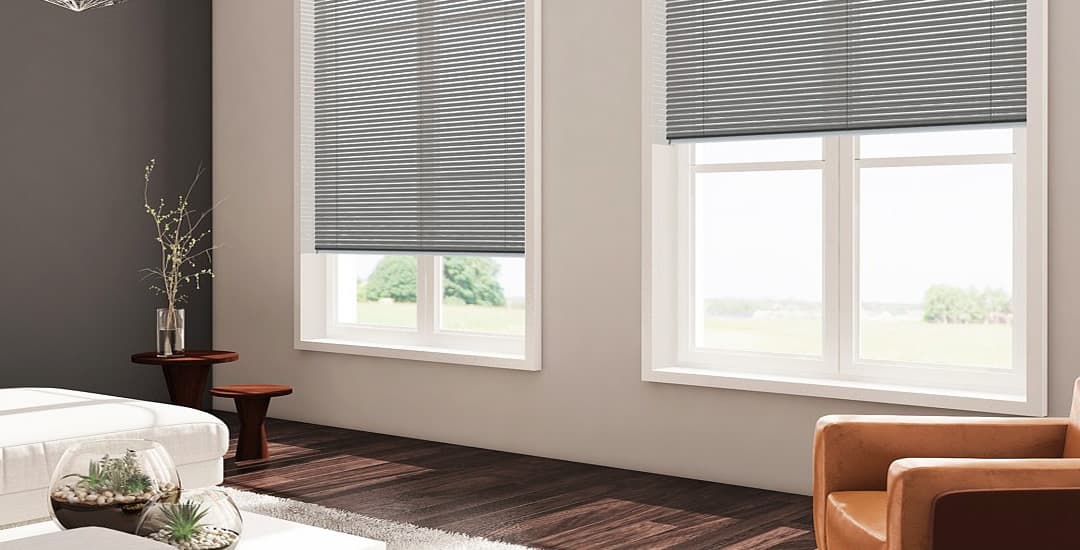
Faux-wood (above) and real wooden blinds (below) are both a type of Venetian blind; the term “Venetian blind” describes a style, in terms of slats and tilt-a-bility.
When we use the term “Venetian blind” as a standalone without prefacing it with a material, this almost universally means aluminium Venetian blinds, and these come fifth in my list of the easiest type of blinds to maintain.
- For cleaning Venetian blinds you can use either a wet cloth or just a duster; as Venetian blinds, like faux-wood blinds, are waterproof. However, the slats of an aluminium Venetian blind are lightweight and can dent or bend if they’re treated overly roughly, which means you need to be a shade more delicate and so, take a shade longer about this than is the case for cleaning faux-wood blinds.
- Like faux-wood Venetians, you have to factor in the potential added issues that may arise with lift cords over the long term, and also for aluminium Venetians, the risk (albeit a low one) of getting dings or dents to the slats.
- For maintenance on an ongoing basis, again this is the same as for faux-wood blinds, meaning the occasional lubricating of the mechanism, potentially unscrambling a lift cord or tape gone awry, and refixing the breakaway in the control cord if this comes apart.
Sixth: Wooden blinds
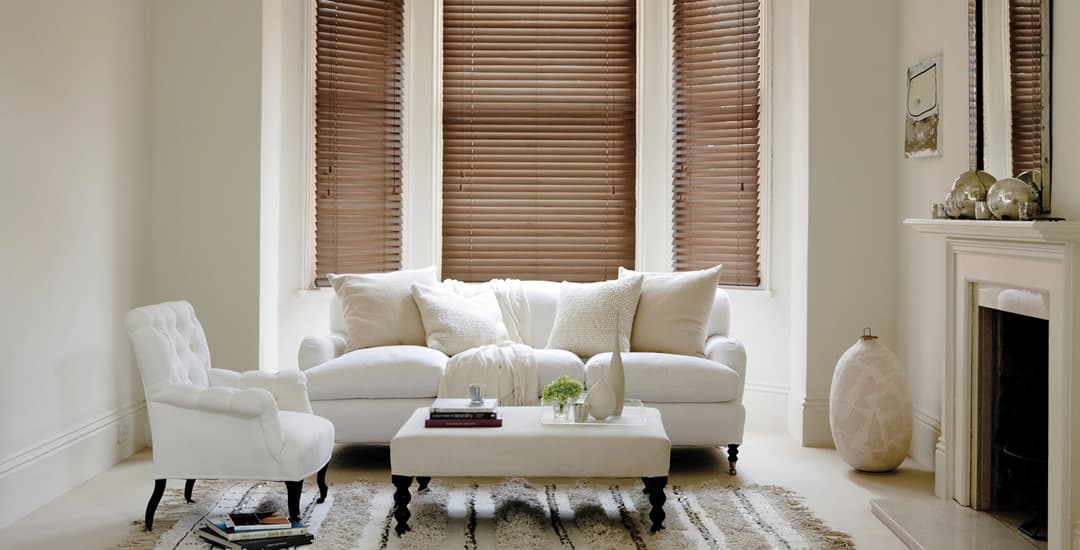
Wooden blinds (real wood blinds) are the third and final member of the Venetian blind family; and the lowest ranked in terms of ease of maintenance.
This is all relative, however; honestly, going from the easiest blinds to maintain at the top of the list (waterproof roller blinds) to here is not the gaping chasm it may seem to be, and ongoing care and cleaning will take fractionally longer for this type of blind rather than the protracted periods of time you might be concerned about.
Why have I decided that real wooden blinds are a shade more challenging than the other two types of Venetians then?
- Cleaning wooden blinds will take more or less the same length of time as cleaning either of the other two types, not longer; but they can only be dusted, not washed, as they’re not waterproof.
- Their slats are less robust than faux-wood blinds, but sturdier than those of aluminium Venetian blinds; as wood is a natural material it needs to be treated as such. Then you’re just back to the lift cords or ladder tapes again as a potential but unlikely issue over the long term.
- The maintenance that a real wood blind might theoretically need again relates to the lift cords/tapes, the operating mechanism stiffening or squeaking, and the child safety breakaway cord breaking respectively.
Seventh: Vertical blinds
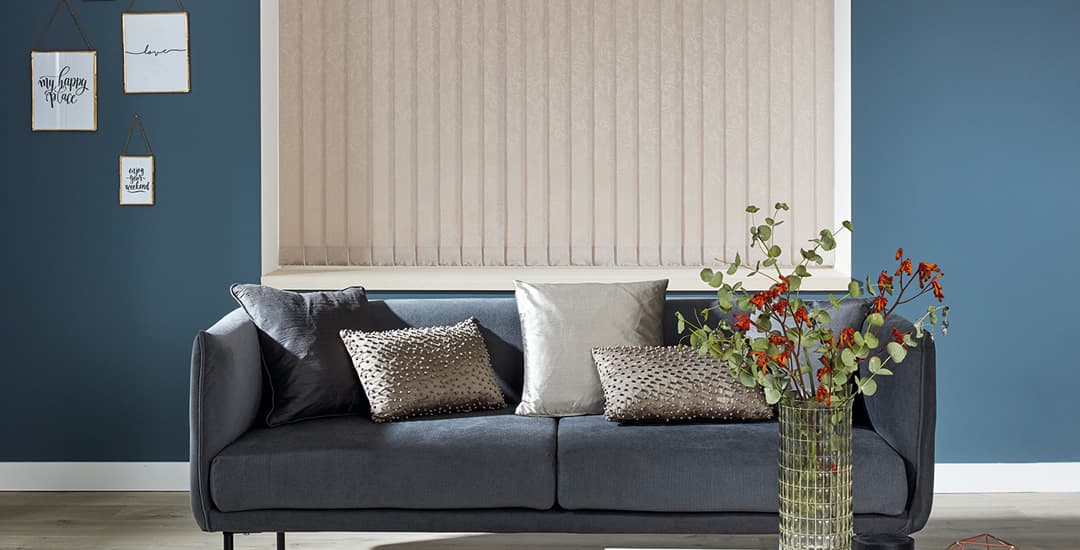
Vertical blinds are blinds made of hanging vertical strips of fabric (louvres) that connect individually to a headrail at the top, and that are held together with a continuous chain along the bottom. Each individual louvre is weighted.
I thought long and hard about positioning vertical blinds in last place in terms of which blinds are easiest to maintain, and I still feel a little bit conflicted over doing so!
I eventually reached my conclusion that last place was warranted, because vertical blinds do ultimately have more that can potentially go wrong with them than any other type of blind, and they’re also probably the most time-consuming to clean.
However, the reason for my existential crisis here is that vertical blinds are probably the type of blinds that are potentially going to live the longest in good functional order overall; and because it is very rare for any of the potential vertical blind maintenance issues, I’m about to mention to arise on their own under normal usage conditions.
- Cleaning vertical blinds can be time consuming, as they’re made up of all of those individual fabric louvres, plus the control chain at the bottom. You can get waterproof vertical blinds, which can be washed or dusted, and regular verticals, which can only be dusted.
- Vertical blind louvres are honestly far more robust than you might expect for strips of fabric, and damage to the louvres themselves is unlikely.
However, tangling or snapping of the connector chain at the bottom, or louvres being pulled clean off the headrail (potentially snapping the hook holding them there, and even damaging the truck it slides along in the process) are the main reasons why I class them higher than other blinds in terms of things that can potentially go wrong. - That said, those very issues – connector chain snapping, and louvres getting pulled down – aren’t issues that develop over time due to normal wear and tear, or as “just one of those things.” They only occur due to improper use or errors in use, like someone pulling on a louvre, or trying to walk through the louvres, snagging the chain and placing pressure on the small parts of the blind in the process.
- These issues may arise if you have toddlers or pets that walk through closed louvres, tangle themselves up in the blind, or pull the blind about, and also may occur if you have drunk friends over who try to walk out through the patio doors without opening the blind first. Such issues are highly unlikely to happen on their own; but if they do, they can be a problem to fix.
- You also have the usual “lubricating the mechanism occasionally” as with all of the other types of blinds above.
Got a blinds maintenance question?
If you have a maintenance issue with any type of blind and/or are wondering if a certain issue with a blind can be fixed and how, leave me a comment or send over an email and I’ll find out and let you know!




